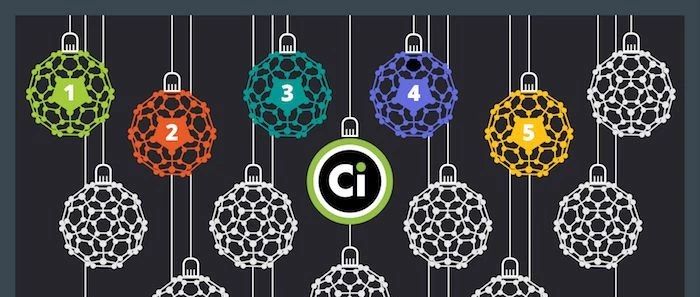
I like the color ball design very much this year.
December, as usual, this year's information icon blogger CompoundInterest began to update the 2018 chemical Christmas calendar.
this year's calendar has added new ideas to the design, changing the Christmas ball to look like fullerene:
at the same time, the content of the Christmas calendar updated every day has also changed greatly. A few years ago, this series of Christmas calendars introduced some chemicals related to Christmas every day, such as the odor molecules in the Christmas tree, the chemistry behind Christmas candy and chocolate, and so on. But after a few years of doing it, you may have said everything you can, so the content of the information diagram is slightly repeated. This year's content has been thoroughly reformed and has become a daily introduction of several important figures in the history of chemistry.
the following is an illustration of the information updated a few days ago:
on December 1st, chemist Antoine Lavasil and his wife Mary-Anna Pierre Wright
this can be regarded as a relatively famous scientific research couple in the early days. Lavasil, known as "the father of modern chemistry", discovered the role of oxygen in combustion, named hydrogen and oxygen, and published the first chemistry textbook in 1789. On the other hand, the versatile wife assists her husband in scientific research, translates documents and draws illustrations. For more information, see this article: what the chemistry textbook doesn't tell you: how awesome is the beautiful wife around Lavissier?
December 2, on the left is the chemist Joseph Proust, whose most important job is to determine the law of ratio, that is, every compound, whether natural or synthetic, no matter how it is prepared, the mass ratio of its constituent elements is constant.
on the right is Elizabeth Fulham, the Scottish chemist who first put forward the concept of catalysis.
December 3, on the left is John Dalton, a chemist and physicist whose contribution to chemistry is mainly atomic theory. for example, he proposed that chemical elements are made up of atoms (he is also the scientist who discovered color blindness in himself).
in the middle is Jane Massett, a little-known name, but she published the most popular chemistry book in the 19th century. The book "Conversations on Chemistry" can also be found in Google Books: to the right of https://books.google.co.uk/books?id=bHcJAAAAIAAJ&dq=Conversations+on+Chemistry,&redir_esc=y
is Humphrey David, a chemist who has made important contributions to electrochemistry and element discovery, using voltaic stack electrolysis to obtain a series of elemental elements, such as sodium and potassium.
Nothing could be more magnificent than our 9th grade homecoming dresses. Check the New Arrivals and the latest word in fashion.
for more information, please visit the CompoudInterest website. This year's Christmas calendar is being updated daily, which will last until December 25. The website of the Christmas calendar: https://www.compoundchem.com/2018advent/